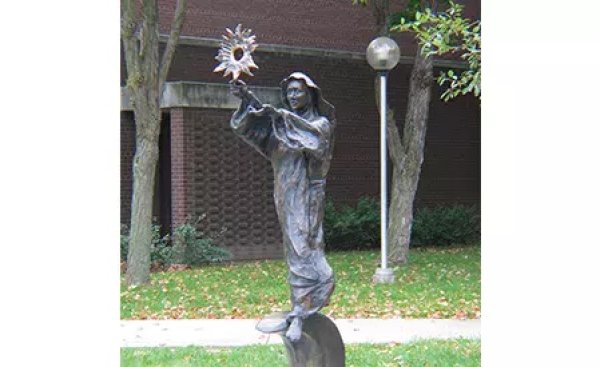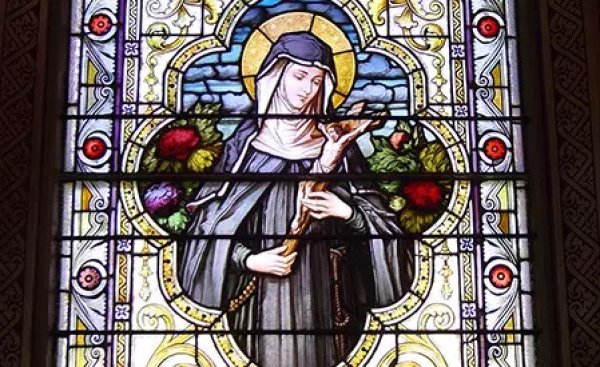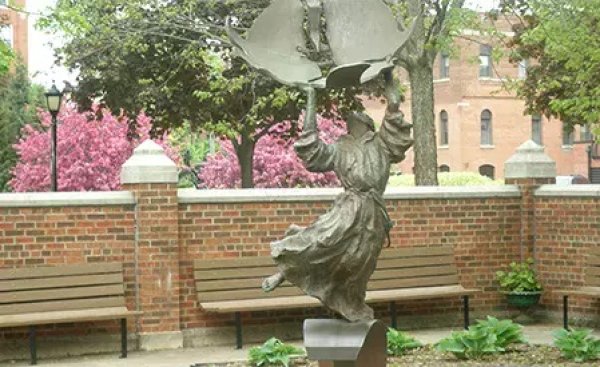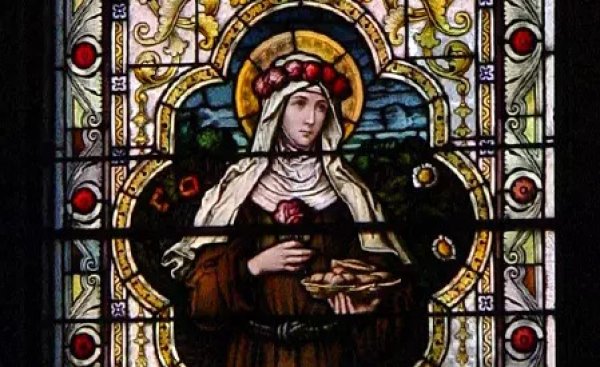Franciscan Heritage
"St. Francis was a man who was in touch with the wounds of his time and whose life made a countercultural statement.
As a son of a cloth merchant, he grew up as part of the emerging middle class; comfort and pleasure were ordinary for him,
and he could choose to avoid poverty and struggle. He became a knight and was captured during a war with a neighboring
city, and this caused him to rethink his life.
From St. Francis, I learn how to sacrifice comfort and live a prophetic message that God's love is wild and transformative.
He and his brothers (along with St. Clare and the Poor Ladies) lived simply and devoted to Christ. Aware of his creaturedom,
St. Francis proclaimed a mutuality with all God's creation in his Canticle of the Creatures, naming other as Sister and Brother.
Having dominion over anyone or anything did not match his understanding of the Gospel.
The message of his life is incredibly relevant today."
- Sister Julia Walsh, Global Catholic Sisters Report
Essential Franciscan values exemplified in the life of St. Francis
Contemplation, a reflection on God and the Christian Gospel and on the values therein — human dignity, common good, justice and much more.
Conversion, an openness to continuous change and improvement in our interaction with God's world and a deepening of religious faith.
Minority, a sign of our conversion and consecration, to live simply, to have true and humble faith, to serve and work faithfully and conscientiously, to live with special dedication and joy.
Poverty, an understanding and acknowledgment that Jesus, though rich, emptied himself. Therefore, we give whatever we have beyond our own need to the poor and those in need.
Saint Clare of Assisi
Clare, 1193 - 1253, lived as a penitent within the Offreduccio family household and was known throughout all of Assisi for her holy manner of living. On Palm Sunday, 1212, Clare took a bold step on her spiritual journey. She renounced her privileged position in the nobility and received the garb of the followers of Francis...
Crescentia Hoess
Crescentia's (1682 - 1744) piety was so great that when she entered the Kaufbeuren convent the superior doubted her sincerity and put her to many tests. Reportedly, Crescentia was challenged to carry water in a sieve and succeeded. Crescentia frequently had mystical experiences, especially after receiving Communion. Often she saw the Holy Spirit and other saints in her visions. Although the visions troubled her, she eventually came to see them as a grace from God...
Crescentia Hoess: learn more
Saint Francis of Assisi
Francis' (1182 - 1226) parents were Pica and Pietro Bernadone, members of Assisi's merchant class. As a young man, Francis lived a carefree, luxurious life, leading his companions in singing, dancing, and merrymaking. He aspired to become a knight in the warring conflicts between Assisi and Perugia, a neighboring city-state. After being held as a prisoner of war and suffering a long illness, Francis abandoned his worldly ambitions and wealth and set upon a journey that led him toward the values and lifestyle of the Gospels...
St. Francis of Assisi: learn more
Rose of Viterbo
The precise years of Rose of Viterbo's life and death are uncertain. Most scholars agree she was probably born around the year 1233 (and died in 1251). It was the season when roses were beginning to bloom and the fourth Sunday of Lent, the Sunday of the Rose. For her parents, the name Rose signified the beauty of the virtues and the love of God in their hearts...
Rose of Viterbo: learn more
San Damiano Cross
The original cross, fashioned about 1100, hangs in Santa Chiara Church in Assisi. When in 1257, the Poor Clares moved to Santa Chiara, they took the San Damiano Cross with them and still guard it with great solicitude. The crucifix now hanging over the altar of the ancient church of San Damiano is a copy...
San Damiano Cross: learn more






